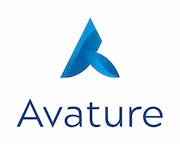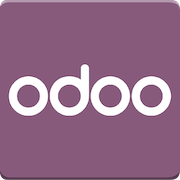Looking for the best human resources software for your business? Our comprehensive buyer's guide covers all the top options out there. Click now to unleash your HR potential!
Are you tired of spending countless hours managing your company's HR processes manually? Are you struggling to keep up with employee data, leave requests, and performance reviews? Look no further than human resources software. The right HR software can help you streamline your HR operations, increase productivity, and improve your organization's overall performance. With so many options available, it can be challenging to choose the right one for your business. That's why we've put together this comprehensive buyer's guide to help you make an informed decision. In this guide, we'll cover all the essential features, benefits, and considerations you need to know when selecting such a solution.
What is human resources software?
Human resources (HR) software refers to technologies that automate administrative HR tasks, freeing up HR professionals to focus on more strategic work. This software often includes core HR functions such as personnel tracking, benefits administration, payroll processing, compliance management, and more. Utilizing one can improve the efficiency of HR operations, reduce the risk of human error and help companies make data-driven decisions.
As companies continue to grow, the need for this solution has become inevitable. It has become a must-have tool for HR teams, regardless of the size of the business. It is now an essential component of human resources management, and can help streamline HR processes and improve employee experience. Here are its most common use cases:
- Applicant tracking: Managing both active and passive candidates, tracking resumes and job descriptions, and managing communication between recruiters and potential hires.
- Onboarding: HR software can automate onboarding processes, and ensure all the necessary paperwork and tasks are taken care of for new hires.
- HR compliance: Monitoring regulatory and legal compliance and ensuring the company is up-to-date on the latest legislation.
- Performance management: It can centralize the administration of performance reviews, employee goal-setting and feedback, and employee development plans.
- Benefits administration: An HR solution can manage employee benefit plans and help employees understand their options as well as track time off for vacation or sick days.
- Training: This can provide online training courses to ensure employees are able to learn and grow within the company.
Types of companies that use such a system vary from small businesses to global corporations. Here are some examples:
- Start-ups with growing teams that need a solution to manage HR tasks and employee data
- Small businesses that want to automate time-consuming HR processes to reduce administrative overhead
- Medium to large-sized businesses that require advanced HR features to manage a large workforce
- Multinational corporations that need a centralized HR solution for their global employee base
What are the benefits of investing in a human resources package?
Human resources software is an essential part of any modern business operating in a digital environment. The software provides businesses with the tools they need to manage employee data, track performance, and automate HR processes, freeing up valuable time and resources to focus on strategic business priorities. Here are some of the main benefits of using this essential system:
- Improved efficiency: HR professionals can spend hours manually handling paperwork, data entry, and filing. With HR software, these tasks can be automated or at least simplified, significantly reducing the time and effort required to complete them.
- Better employee engagement: This HR technology can help to foster a more engaged workforce by providing employees with easy access to important information and tools. For example, employees can view their schedules, benefits, and performance metrics in real-time without having to go through their HR team.
- Increased accuracy: Manual HR processes are prone to errors and mistakes, which can result in compliance issues, legal repercussions, and unnecessary expenses. An HR platform can help to eliminate these errors by automating data entry, providing error-checking tools, and ensuring compliance with regulations and policies.
- Improved data analysis: An HR program can help HR professionals to analyze data on various aspects of the company's workforce, from hiring and performance to pay and benefits. This data can help to identify patterns and trends, as well as highlight areas where improvements can be made.
- Reduced costs: By automating HR processes, businesses can reduce the amount of time and resources required to complete HR tasks. This, in turn, can result in significant cost savings over time.
Human resources software offers businesses a range of benefits that can improve efficiency, accuracy, and engagement while reducing costs and ensuring compliance. By investing in HR software, businesses can position themselves to succeed in the rapidly evolving world of work. A KPMG study has reflected that 49% of HR executives invested in HCM over the past few years.
10 key features of human resources software
This tool has become a must-have as it allows HR managers to automate and streamline tasks, making work faster, more accurate, and efficient. With numerous software options available, it can be challenging to determine which one is suitable for your business. Below we discuss the top 10 of its common features that result in improved efficiency and better employee management.
1. Applicant tracking system (ATS)
An ATS is designed to assist HR managers in screening, sourcing, and managing job candidates. It helps to manage the entire recruitment process from scheduling interviews to sending job offers.
2. Time and attendance tracking
Time and attendance tracking software allows HR managers to track employees' clock-in and -out times, including break times. It also helps keep track of employee absenteeism, making it easier to monitor employee productivity and efficiency.
3. Performance management
Performance management software enables HR managers to set employee goals and track individual progress towards achieving those goals. Employees can be evaluated regularly to maintain productivity and meet business objectives.
4. Employee onboarding
Employee onboarding involves teaching new employees about the company culture, policies, and procedures. An HR package can automate the onboarding process, making it simpler, quicker and more professional.
5. Payroll management
Payroll management software helps HR managers organize employee payroll data efficiently. It accounts for employee income, taxes, benefits, and other deductions, ensuring accurate pay slips and payment processing.
6. Employee database management
HR software is capable of storing staff information in a centralized database. This reduces paperwork and expedites employee data retrieval, streamlining business operations.
7. Employee self-service features
With self-service features, employees can access their information, such as pay slips and leave history through the HR software portal. This reduces employee requests to HR managers, improving overall efficiency.
8. Customizable reporting
Customizable reporting allows HR managers to generate reports showing employee performance metrics, leave entitlements, and tardiness summaries. Reports can be customized to show specific information and help management make data-driven decisions.
9. Compliance management
Compliance management involves adherence to legal and regulatory requirements related to employee management. HR software helps managers stay compliant to avoid costly legal issues.
10. Learning and development
Employee training and development are an essential part of HR management. HR software can automate the process, provide training modules, and track employee progress. Developing employee competency improves productivity, and training becomes more consistent for all staff.
An HR solution plays an essential role in automating HR management tasks and streamlining processes, making management more efficient and the employees faster at accessing information. By implementing such a program, businesses can improve employee performance and satisfaction while complying with legal obligations. The HR software options available in the market have multiple features, but these 10 common features are all must-haves for any company-focused on business success.
7 key considerations when purchasing a human resources platform
Organizations face various issues when it comes to managing their workforce. From recruitment and talent acquisition to performance management and retention. HR functions are vital to business operations; that's why many businesses opt for a solution to automate and streamline HR processes. Choosing the right one can improve productivity, drive employee engagement, and reduce costs.
Here are some essential factors businesses should consider when selecting such a tool:
- Features and functionality: It comes with different features and capabilities. Some software solutions offer basic features such as time and attendance management, while others include advanced features such as performance management, onboarding, and employee engagement tools. Businesses should identify their specific HR needs and select a software solution that aligns with their organizational goals.
- Scalability: As businesses grow, their HR needs change. Therefore, it’s vital to select an HR software solution that can scale with the organization's growth. Scalable HR software can cater to a growing workforce and accommodate additional features and functionalities.
- User-friendliness: The one you select should be intuitive, easy to navigate, and user-friendly. The user interface should simplify HR processes, increase efficiency, and reduce manual errors. User-friendly HR software can make HR tasks more manageable and less time-consuming.
- Integration: It should also integrate smoothly with other existing business software. Integration with other applications, such as payroll and accounting software, can streamline the HR process and minimize manual tasks. Integration can also help minimize data entry errors and improve data accuracy.
- Support and training: When selecting an HR software solution, businesses should consider the level of support and training provided by the vendor. Training and support can help users navigate the software, troubleshoot issues, and maximize the software’s capabilities.
- Security: HR software should prioritize data privacy and security. Sensitive employee data is stored in an HR system, and businesses need to ensure that the software is compliant with data privacy and protection regulations, such as GDPR and HIPAA.
- Cost: It is also crucial to consider the costs of the HR system. While comprehensive platforms offer efficiency and compliance benefits, balancing value and affordability is key, especially for budget-constrained businesses. Conducting cost-benefit analysis and exploring pricing models help align decisions with budget and long-term goals. The average budget per user for HRIS software is $12,625 or approximately $210 per user per month.
Industry trends for human resources software
As businesses navigate the post-pandemic world, HR technology remains crucial. To stay competitive in 2024 and beyond, companies must embrace the latest trends of this solution.
Trend #1
First on the list is the rising importance of cloud-based systems. Cloud-based HR software offers an array of benefits, including automatic updates, remote access, and more comprehensive data protection.
Trend #2
Next, the continued growth of the gig economy means that HR teams must use HR technology to manage freelancers and contractors effectively. With that said, employee wellness, safety, and support will also become increasingly important in HR software trends.
Trend #3
Another trend will be the increased use of data analytics, which will help companies assess the effectiveness of various HR programs and make data-driven decisions.
HR software will help companies tackle diversity and inclusion issues in the workplace, enabling HR professionals to track and analyze employee demographics and ensure fair hiring practices. HR technology trends for 2024 focus on strategic initiatives, the hybrid work environment, employee wellness and safety, data integration, hiring and retaining workers, enhanced decision-making, diversity, and inclusion. By embracing these trends, companies move closer to obtaining the objectives of their business, and satisfied employees ensure top-level results.
Conclusion
In summary, HR software is indispensable for modern organizations, facilitating streamlined HR processes, enhanced workforce management, and improved operational efficiency. Offering a wide array of features, from recruitment to payroll processing, it caters to diverse business needs. By harnessing automation, analytics, and cloud technology, it enables data-driven decision-making, ensures compliance, and cultivates a positive workplace culture. As businesses acknowledge the strategic value of their human resources, investing in robust HR solution emerges not only as a necessity but also as a key driver for attracting, retaining, and nurturing talent.






